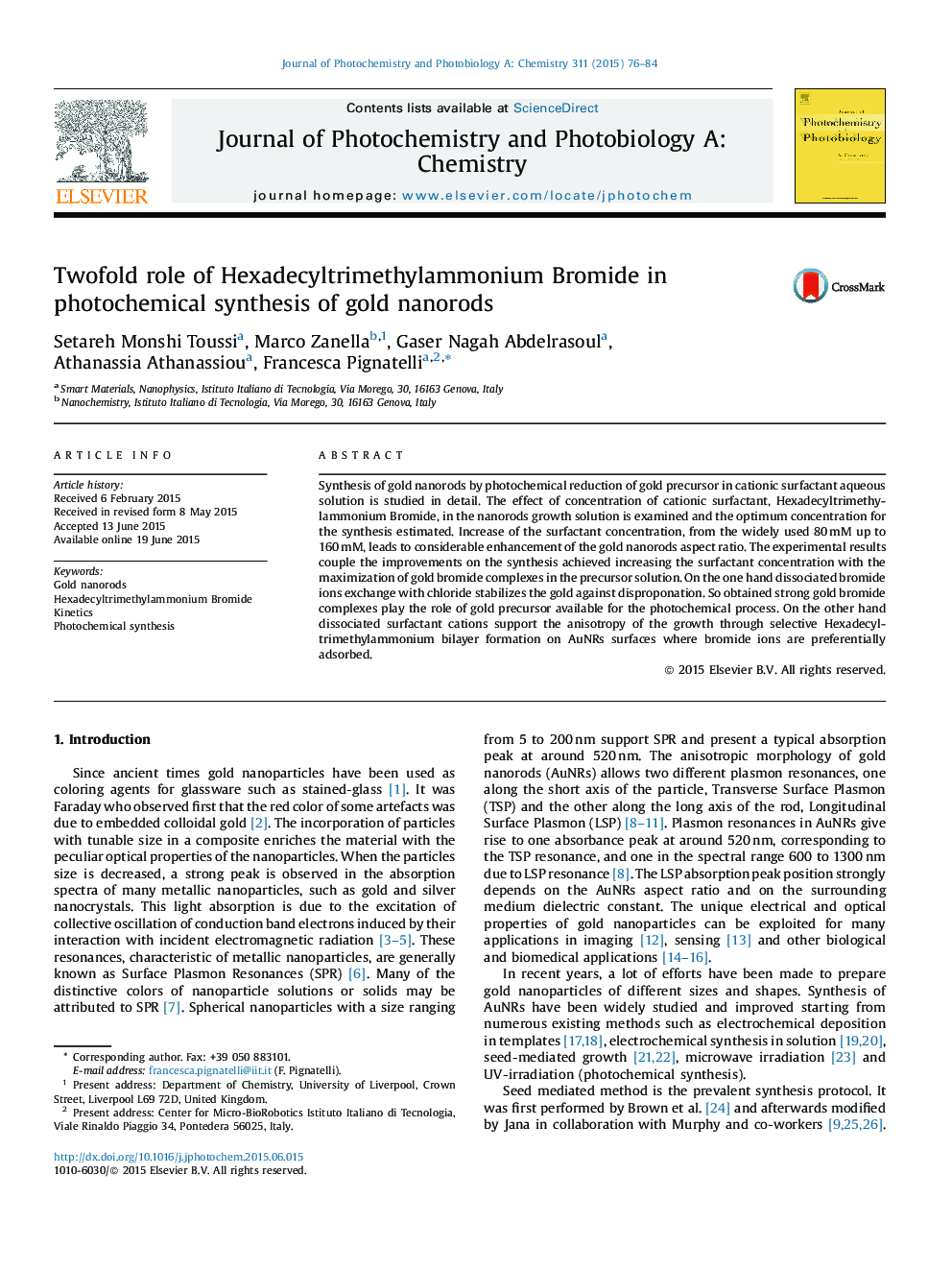| Article ID | Journal | Published Year | Pages | File Type |
|---|---|---|---|---|
| 26112 | Journal of Photochemistry and Photobiology A: Chemistry | 2015 | 9 Pages |
•We look into the role of Hexadecyltrimethylammonium Bromide on the nanorods growth.•Presence of gold chloride in the precursor solution causes nanoparticles formation.•We show only bromide complexes constitute gold precursor for the nanorods growth.•We expect stronger absorption energy of bromide complexes to facilitate anisotropy.•We succeed in synthesizing gold nanorods even using ineffective surfactant batches.
Synthesis of gold nanorods by photochemical reduction of gold precursor in cationic surfactant aqueous solution is studied in detail. The effect of concentration of cationic surfactant, Hexadecyltrimethylammonium Bromide, in the nanorods growth solution is examined and the optimum concentration for the synthesis estimated. Increase of the surfactant concentration, from the widely used 80 mM up to 160 mM, leads to considerable enhancement of the gold nanorods aspect ratio. The experimental results couple the improvements on the synthesis achieved increasing the surfactant concentration with the maximization of gold bromide complexes in the precursor solution. On the one hand dissociated bromide ions exchange with chloride stabilizes the gold against disproponation. So obtained strong gold bromide complexes play the role of gold precursor available for the photochemical process. On the other hand dissociated surfactant cations support the anisotropy of the growth through selective Hexadecyltrimethylammonium bilayer formation on AuNRs surfaces where bromide ions are preferentially adsorbed.
Graphical abstractFigure optionsDownload full-size imageDownload as PowerPoint slide
